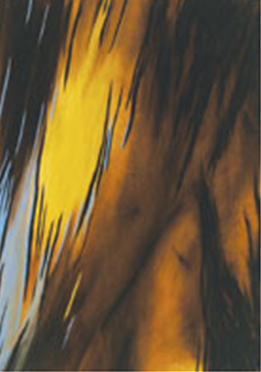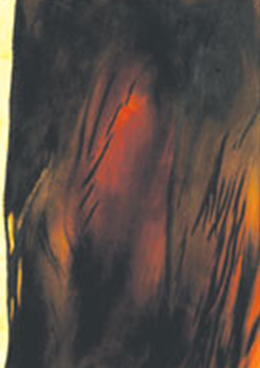Faiza Kassim
This is a collection of articles archived for the excellence of their content. Readers will be able to edit existing articles and post new articles directly |
Faiza Kassim
A private view
By Marjorie Husain
At a recent, one day preview of her work intended for exhibition at the Trunkt Gallery, Greenwich Village, New York , Karachi-based painter Faiza Kassim, expressed her feeling in a method of Abstraction that is not representative of the world around her. Pressed to explain her work she said, “I view statements about the work as interruptions in the process of truly experiencing the work.” Her words convey feelings in common with Abstract Expressionist painters globally. In one instance American painter Clifford Still, is quoted as stating that “all explanation was complete irrelevancy and that the paintings if regarded calmly and without what he considered ‘scholastic intimidation’, would speak for themselves.”
Faiza maintains that when art is created from within it touches people and speaks to audiences in a myriad of ways, often unknown to the maker. “I hope my work will speak to people.” The exhibition in New York is composed of twenty-one oil paintings and mixed media pieces. As always, in Faiza’s paintings, one finds bold, mysterious elements, invigorated with dynamic energy that has taken the painter through successive sleepless nights of work. Varying in scale, one finds glowing, lustrous areas giving light to rich, deep tones of earth, diagonal lines that beckon with a suggestion of promise. A series of work predominated by shades of blue attract the eyes and senses with a meditative centre of tranquillity in chaos. Faiza’s paintings are unplanned, taking shape on the canvas where confusion is disciplined into accord. “I do not let the paintings control me, it is I who is in command…,” she maintains.
Faiza’s work was first seen in exhibition in 1994 and her recognition as an artist of promise came two years later when Ali Imam discovered her work in the process of framing at a workshop behind the Indus Gallery. Dropping in to the Indus Gallery at that time one found an elated Ali Imam thrilled by the discovery of a new art talent. Faiza Kassim, a slight, modest figure was overwhelmed by the interest in her paintings shown by this distinguished man of the arts.
In those days, the Indus Gallery was the most prestigious gallery in town and Ali Imam chose his artists with care and it was a mark of success to show one’s work in his gallery. Faiza’s involvement with art had from an early age been a source of enjoyment. She took A level art and was then guided by Nayyer Jamil who remains her mentor to this day. Unrestricted by styles or methods, she painted as the mood took her and Imam was enchanted by the lustre of the abstract works and pointed out to visitors the light seemingly gleaming from layered surfaces.
In those pieces Faiza had barely used a brush. She first applied oil paints with cloth across the surface then added layers of paint using her fingers and palm to work the media on to the surface. The delicate looking girl worked with enormous energy and vigour, polishing the work in a uniquely personal form of creativity.
An extensive exhibition of fifty of her artworks was mounted at the Indus Gallery in 1996, and received with critical acclaim by art writers and the public. In those works one could discern playful references to letters of the alphabet, perhaps a reference to the artist’s career in a family owned school. Exhibitions followed in Karachi and in Islamabad, but displaying the work was never a primary concern. Faiza continued to work from an inner compulsion that she believes may be connected to a number of personal factors. “So much goes on in life that it becomes hard to pinpoint where the work really comes from.”
Viewing Faiza’s latest work, one finds the changes wrought by maturity. Gone are the slight, whimsical, dancing shapes. In their stead are changing patterns of light and darkness, gestural strokes of contrasting colour often appearing like jagged interventions in the textured forms or outlines containing the swirling mass of colour. The coming about of the exhibition held at the Trunkt Gallery, USA, is reminiscent of the first discovery of her work by Ali Imam. The proprietor of the American gallery on a visit to Karachi, happened upon Faiza’s work at a friend’s house and a new chapter began.


